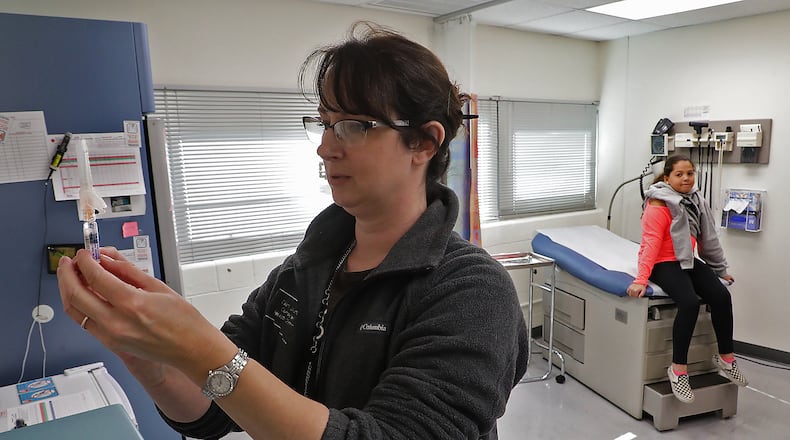These numbers bring to 5,457 the total hospitalizations since the season began at the end of September, and are more than double the hospitalizations reported during the same week of last year’s flu season.
This includes 123 flu-related hospital stays for the season Clark County residents, as of Feb. 9.
“One in 12 Americans is likely to get sick from flu this season,” said Ohio Department of Health Medical Director Dr. Mark Hurst,. “The next person hospitalized could be you, your child, or another loved one. Protect yourself and everyone around you by getting a flu shot and following other precautions.”
KROGER UPDATE: Springfield Foundation sets up fund in wake of Kroger closure
Two Ohio children, girls ages 11 and 16, have died from the flu this season. Adult deaths are not reported to the state.
The Associated Press reported Friday that nationally, the number of child deaths and the hospitalization rate for youngsters are the highest seen at this point in any season since the severe flu outbreak of 2009-10. And the wave is expected to keep going for weeks.
Overall, the CDC estimated that 26 million Americans have gotten sick with flu this past fall and winter, with about 250,000 flu-related hospitalizations and around 14,000 deaths.
The virus can be especially dangerous for people who are very young or elderly, people with compromised or weakened immune systems, people with chronic health conditions, and pregnant women. If you are in one of these categories and develop flu symptoms, Hurst advises, seek medical care right away.
Certain antiviral medications can ease flu symptoms and are especially important for people in high risk groups.
Flu shots are advised for everyone six months and older and the vaccines are available at primary care offices, pharmacies, retail clinics, and some workplaces.
WATCH: ‘All of a sudden, hell began’: Couple caught in ambush recount shooting
Along with getting vaccinated, good prevention practices include:
• Staying home when you are sick,
• Avoiding close contact with people who are sick,
• Covering your mouth and nose with a tissue or sleeve when coughing or sneezing,
• Washing your hands often with soap and water,
• Avoiding touching your eyes, nose, and mouth after touching objects,
• And disinfecting surfaces, getting plenty of sleep, and managing stress.
Symptoms typically start one to four days following exposure and include fever, cough, sore throat, runny nose, body aches, headache, and fatigue.
About the Author
